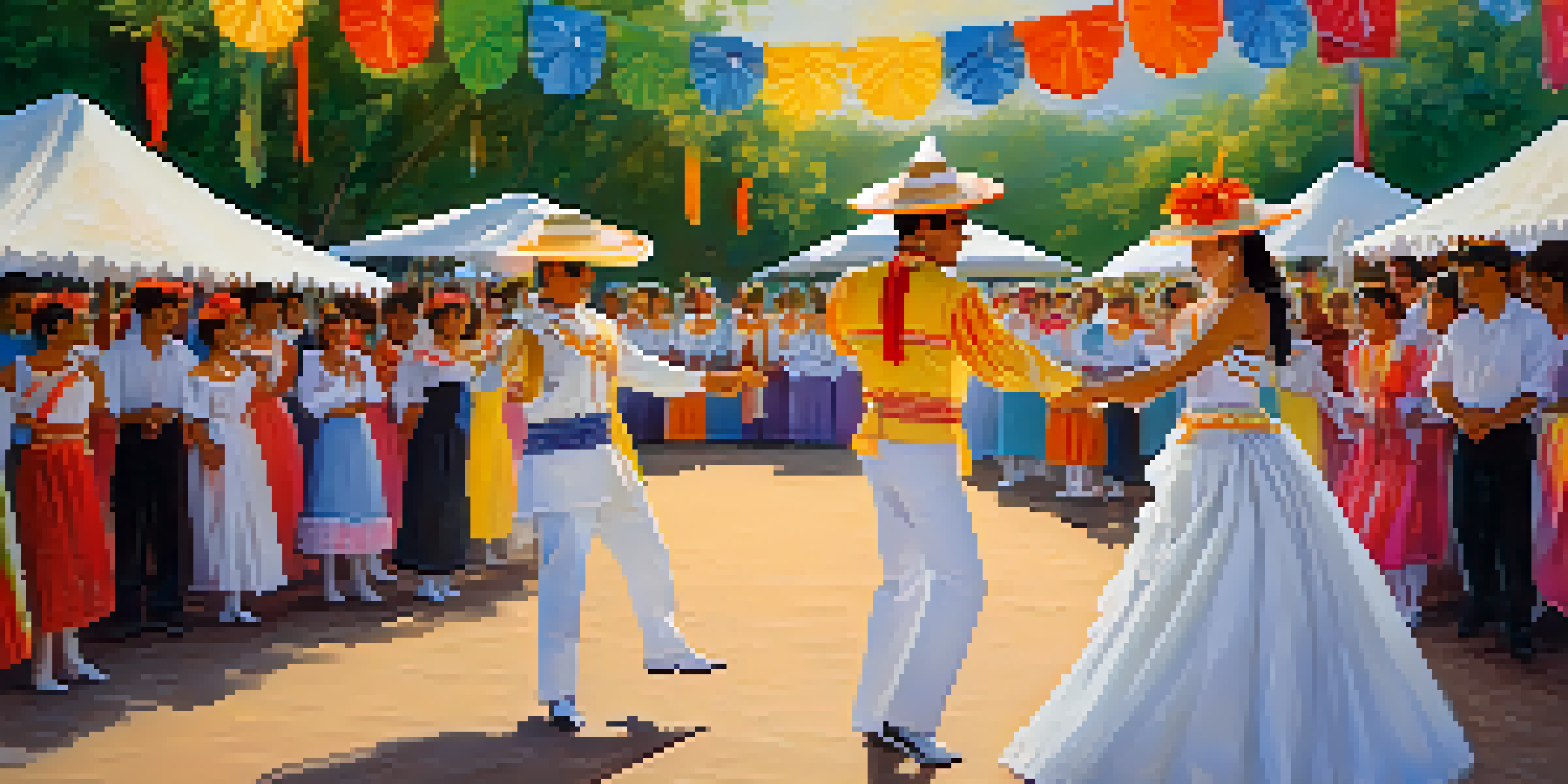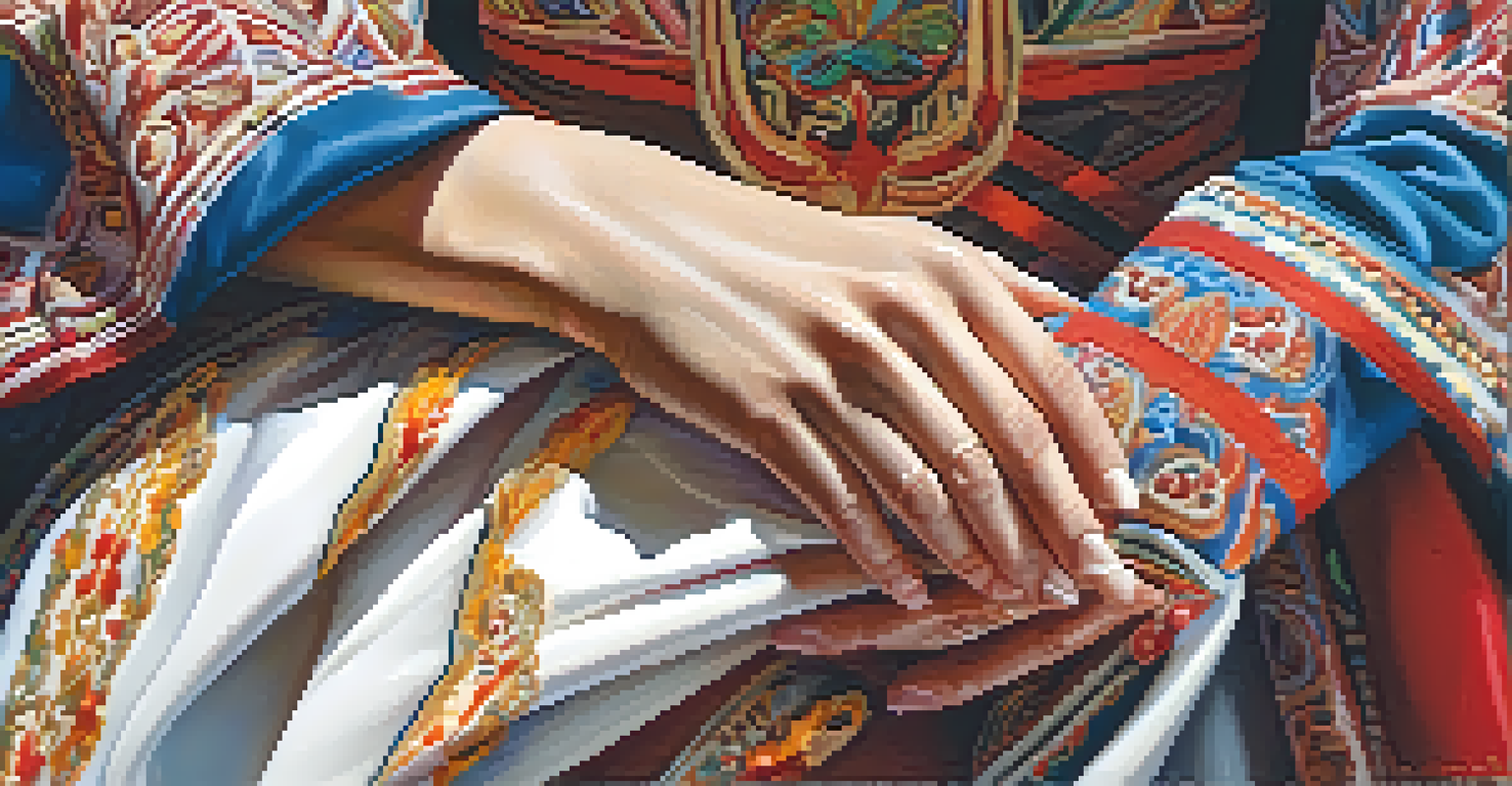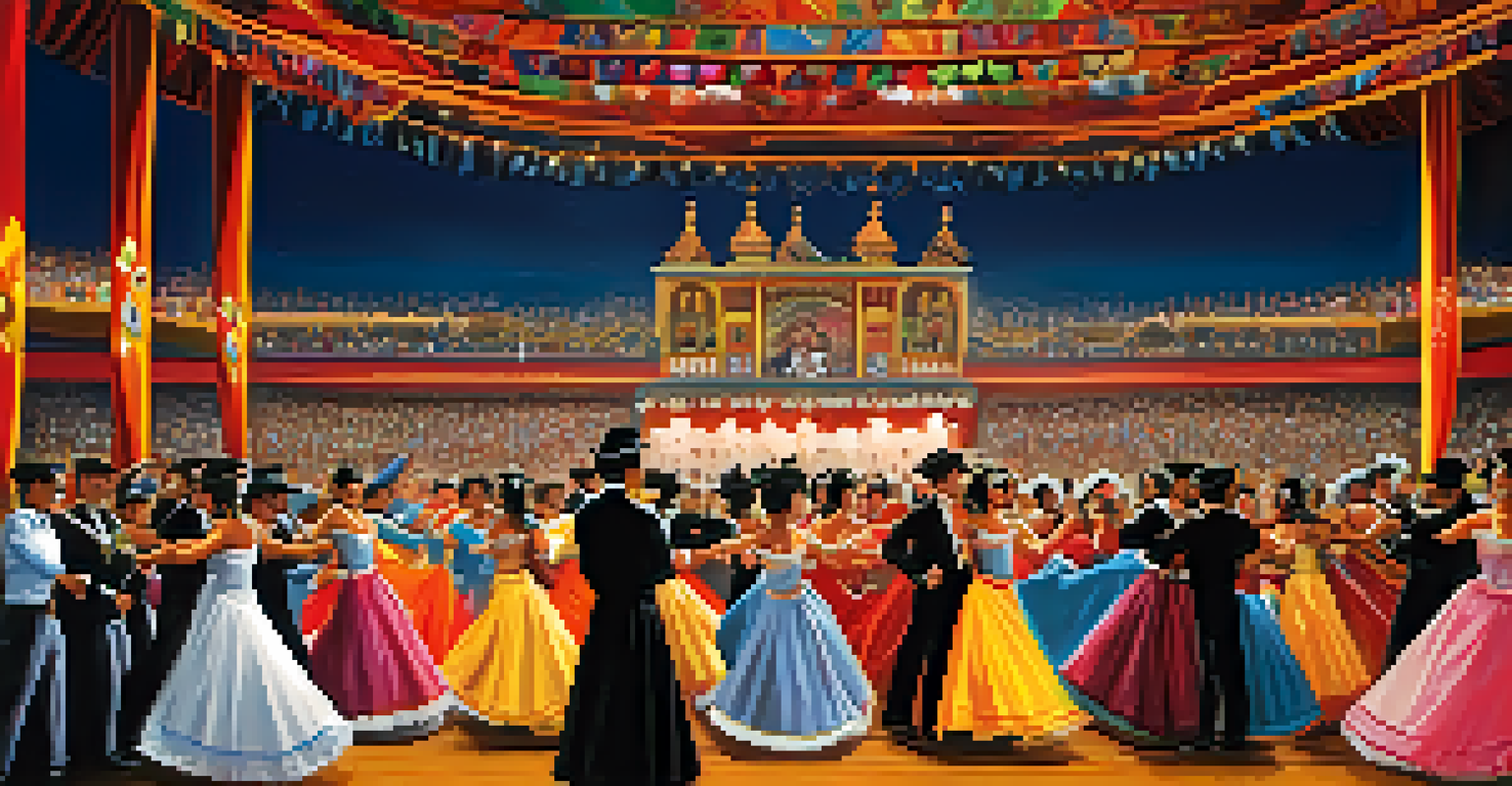The Vibrant World of Marinera: Peru's National Dance

What is Marinera? An Introduction to Peru's National Dance
Marinera is not just a dance; it's a vibrant expression of Peru's cultural heritage. This lively folk dance embodies the spirit of romance and courtship, often performed in pairs. With its graceful movements and colorful attire, Marinera captivates audiences both in Peru and around the world.
Dance is the hidden language of the soul.
The dance varies by region, with distinct styles reflecting local traditions. The most recognized types are Marinera Norteña from the northern coast and Marinera Limeña from the capital, Lima. Each style showcases unique rhythms and steps, making Marinera a rich tapestry of cultural diversity.
Whether performed at festivals, competitions, or family gatherings, Marinera brings people together. It's a celebration of love, community, and the joy of dance, inviting everyone to participate in its rhythmic embrace.
The Historical Roots of Marinera Dance
Marinera has deep historical roots, tracing back to colonial times when Spanish, African, and indigenous influences melded together. This fusion created a unique cultural expression that evolved over centuries. The dance reflects the social dynamics of its time, often portraying courtship rituals between men and women.

Originally known as 'La Marinera,' it gained popularity in the 19th century, particularly in coastal cities. The dance became a symbol of national pride, especially during Peru's independence movements. Over time, it transformed into a formalized dance with established steps and costumes.
Marinera: A Cultural Dance of Peru
Marinera is a vibrant folk dance that embodies Peru's rich cultural heritage, characterized by its romantic themes and regional variations.
Understanding Marinera's history enriches our appreciation of its artistry. Each step and gesture tells a story, connecting generations through shared cultural experiences and highlighting Peru's rich heritage.
Key Elements of Marinera: Music, Costumes, and Steps
At the heart of Marinera is its enchanting music, typically characterized by a lively 6/8 rhythm. Traditional instruments like the guitar, cajón, and violin create a delightful soundscape that sets the stage for the dancers. The music is essential in guiding the dancers' movements, ensuring a harmonious flow.
The dance is a poem of which each movement is a word.
Costumes play a significant role in Marinera's visual appeal. Men usually wear white trousers and a wide-brimmed hat, while women don colorful dresses adorned with ruffles. The outfits not only enhance the performance but also reflect the region's culture and history.
The dance steps of Marinera are intricate yet elegant. Dancers often showcase their skills through a series of turns, footwork, and playful exchanges, embodying the flirtation and charm inherent in the dance. This combination of music, costumes, and choreography creates an unforgettable experience.
Marinera Competitions: Celebrating Skill and Tradition
Marinera competitions are a vibrant expression of the dance's cultural significance. These events draw talented dancers from across Peru, showcasing their skills and interpretations of Marinera. The most prestigious competition, the Marinera Festival in Trujillo, attracts thousands of spectators each year.
During these competitions, dancers are judged on their technique, creativity, and overall performance. It's a thrilling atmosphere filled with excitement and pride, as participants aim to honor their heritage while impressing the audience. Winners often receive accolades that help further their dance careers.
Historical Roots and Evolution
Tracing back to colonial times, Marinera reflects a blend of Spanish, African, and indigenous influences, evolving into a symbol of national pride.
These competitions not only celebrate individual talent but also promote community and cultural preservation. They serve as a platform for younger generations to connect with their roots, ensuring that the vibrant spirit of Marinera lives on.
The Role of Marinera in Peruvian Culture Today
In contemporary Peru, Marinera continues to thrive as a symbol of national identity. It's featured in various cultural events, from local festivals to national celebrations. The dance has transcended its traditional roots, appealing to a broader audience and adapting to modern interpretations.
Marinera also plays a vital role in educational settings, where schools teach this dance to instill cultural pride in students. Dance academies across the country offer classes that preserve traditional techniques while encouraging creativity and individual expression.
This ongoing evolution of Marinera reflects Peru's dynamic culture. By embracing both tradition and innovation, Marinera remains a beloved part of the country's cultural landscape, inviting everyone to join in the celebration.
Learning Marinera: Classes and Resources for Enthusiasts
For those eager to learn Marinera, numerous dance schools and community centers offer classes for all skill levels. These classes provide a welcoming environment where participants can master the basic steps and immerse themselves in the dance's rich history. It's a fantastic way to connect with others who share a passion for this beautiful art form.
Many online resources, including tutorials and instructional videos, are also available for those who prefer learning at their own pace. These materials can help beginners practice foundational steps while allowing experienced dancers to refine their skills and explore new styles.
Marinera's Role in Modern Peru
Today, Marinera thrives as a symbol of national identity, embraced in educational settings and cultural events, ensuring its legacy continues.
Whether in-person or online, embracing the opportunity to learn Marinera can be a rewarding journey. It's not just about mastering the dance; it's about becoming part of a vibrant community that celebrates tradition, creativity, and joy.
The Future of Marinera: Keeping the Dance Alive
As Marinera continues to evolve, its future remains bright. Young dancers are innovating the dance, infusing it with fresh ideas while respecting its traditional roots. This balance ensures that Marinera remains relevant and vibrant in a changing world.
Cultural organizations and communities are actively working to promote Marinera through workshops, festivals, and outreach programs. These efforts aim to keep the dance alive for future generations, fostering a sense of pride and connection to Peru's heritage.

Ultimately, the future of Marinera lies in the hands of its dancers and supporters. By embracing both tradition and innovation, they ensure that this beloved dance will continue to enchant audiences and bring people together for years to come.